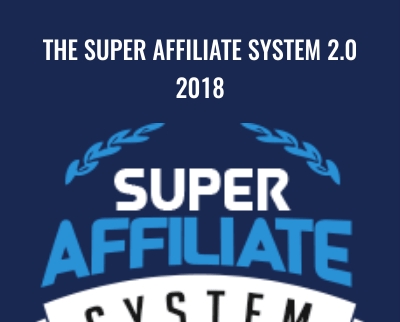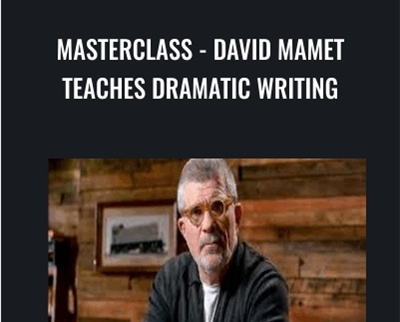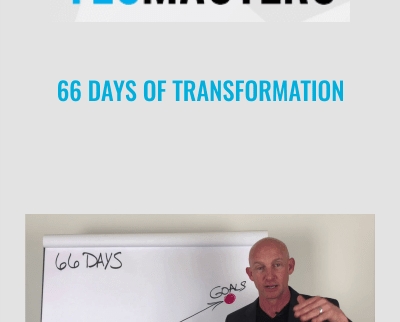Buy Beethoven’s Piano Sonatas – Robert Greenberg Course at GBesy. We actively participate in Groupbuys and are committed to sharing knowledge with a wider audience. Rest assured, the quality of our courses matches that of the original sale page. If you prefer, you can also buy directly from the sale page at the full price (the SALEPAGE link is directly provided in the post).
Salepage link: At HERE. Archive:
$319.95 $46 – Beethoven’s Piano Sonatas – Robert Greenberg
Beethoven was a revolutionary man living in a revolutionary time. He captured his inner voice—demons and all—and the spirit of his time, and in doing so, created a body of music the likes of which no one had ever before imagined. “An artist must never stand still,” he once said. A virtuoso at the keyboard, Beethoven used the piano as his personal musical laboratory, and the piano sonata became, more than any other genre of music, a place where he could experiment with harmony, motivic development, the contextual use of form, and, most important, his developing view of music as a self-expressive art.
Pushing the Piano to Its Limit and Beyond
Spanning the length of his compositional career, Beethoven’s 32 piano sonatas provide a window into his personal musical development, and they show the concept of the piano as an instrument and the piano sonata as a genre undergoing an extraordinary evolution.
The sonatas are not simply compositions for the piano, but are about the developing technology of the piano itself, an evolving instrument that Beethoven pushed to its limits and then beyond, ultimately writing music for an idealized piano that didn’t come into existence until some 40 years after his death.
An Engaging and Exhilarating Professor
As in his previous courses, Professor Greenberg combines his perceptive analyses of musical excerpts with historical anecdotes, metaphors, and humor. He shows what goes on inside a musical composition: how it came to be written, how it works, and how—as is often the case with Beethoven—it may break all the rules to achieve a new and powerful effect. This course is somewhat technical and although musical knowledge is helpful, it is not necessary.
Popular, Experimental, Revolutionary, Shocking
Beethoven’s 32 piano sonatas include some of his most popular works as well as some of his most experimental. This course touches on every one of these fascinating pieces, approaching them chronologically, from the terse and powerful first sonata of 1795 to the revolutionary Hammerklavier Sonata of 1818 and the radical last three sonatas of 1820–1822.
In addition to the Hammerklavier, you will explore in detail the other sonatas that, by virtue of their popularity or other special qualities, have been bestowed with evocative nicknames. These include:
- Pathétique (Piano Sonata no. 8 in C Minor, op. 13): The modern popularity of this piece has obscured its shocking originality, which led a contemporary to characterize Beethoven’s work as “lots of crazy stuff.”
- Funeral March (Piano Sonata no. 12 in A-Flat, op. 26): Beethoven’s first 11 piano sonatas challenged and eventually broke the bonds of the 18th-century Classical style. In this work, he fully embraced a genuinely experimental, avant-garde approach to the sonata.
- Moonlight (Piano Sonata no. 14 in C-Sharp Minor, op. 27, no. 2): The composer Hector Berlioz wrote that the haunting first movement of this famous work is “one of those poems that human language does not know how to qualify.”
- Tempest (Piano Sonata no. 17 in D Minor, op. 31, no. 2): Although Shakespeare’s The Tempest reportedly inspired this sonata, the thematic parallels between the two works are elusive. But like the title of Shakespeare’s play, Beethoven’s sonata must qualify as one of the most expressively “tempestuous” in the repertoire.
- Farewell (Piano Sonata no. 26 in E-Flat, op. 81a): Also known as Les Adieux and Das Lebewohl, this programmatic work commemorates the departure from and return to Vienna of Beethoven’s close friend Archduke Rudolph.
Not all of Beethoven’s greatest piano sonatas have nicknames. The last three are conventionally known by their opus numbers—109, 110, and 111—and are among Beethoven’s most pathbreaking works.
“Oh, to Have Heard Him Play!”
Beethoven first achieved fame as a thrilling and unorthodox pianist who treated the piano, according to his contemporaries, in an “entirely new manner.”
“When Beethoven played, expression always came first,” says Professor Greenberg. “Beethoven was no more capable of slavish adherence to a steady beat than he was able to follow the constructs and rituals of Classicism. Oh, to have heard him play!”
To be present while Beethoven played was considered by contemporaries to be a revelatory experience. Johann Wenzel Tomaschek, a rival piano virtuoso, observed: “Beethoven’s magnificent phrasing and particularly the daring of his improvisation stirred me strangely to the depths of my soul; indeed, I found myself so profoundly bowed down that I did not touch my piano for several days.”
Piano manufacturers saw things differently. According to Andreas Streicher, Beethoven was so violent at the keyboard that he was “unworthy of imitation. … He carries on in a fiery manner, and treats his instrument like a man who, bent on revenge, has his archenemy in his hands and, with cruel relish, wants to torture him slowly to death.”
Nonetheless, once he became famous, Beethoven rarely if ever had to buy his own pianos, as piano builders vied with each other to lend him instruments. Nor did Beethoven let shortcomings of contemporary pianos limit his creativity. In his Piano Sonata no. 7 in D, op. 10, no. 3, he expands two musical phrases into high and low registers that didn’t exist on the keyboards of the day.
Transferring Despair into Musical Action
Beethoven’s childhood was dominated by abuse and loss. Already a bundle of gastric ailments and psychological neuroses, he went deaf over the course of his young and middle adulthood. He was desperately unlucky in love. Desiring a child, he did everything in his power to steal his nephew Karl from the boy’s mother; when he succeeded, Karl attempted suicide.
As he entered his final decade, Beethoven became genuinely paranoid. And yet, says Professor Greenberg, Beethoven translated his experience into action—musical action—by composing pieces that by some amazing alchemy universalized his problems and his solutions
Analyzing Beethoven’s “Game”
Professor Greenberg analyzes many musical passages, taking you note-by-note, phrase-by-phrase through different movements of the sonatas, showing how Beethoven plans and achieves his surprising effects. Beethoven paid scrupulous attention to all aspects of his compositions, and Professor Greenberg elucidates these features and brings them vividly to life, such as thematic development, tempo, large-scale dramatic progression, and psychological manipulation by the performer.
You will learn a wealth of musical vocabulary: terms such as Viennese Classical style, sonata form, theme and variations, exposition, modulating bridge, recapitulation, cadence, minuet, rondo, fugue, and scherzo.
What You Will Hear: Extraordinary Performances by a Celebrated Pianist
Beethoven died 50 years before the invention of sound recording, so we will never hear his voice or the sound of his playing.
You will hear literally hundreds of excerpts of Maestro Claude Frank’s recordings over the span of the course. Frank’s recording of the 32 sonatas was originally released for the Beethoven bicentennial in 1970, and was hailed as “one of the year’s 10 best” by Time magazine.
Truly, Beethoven’s piano music is his voice, emerging from his mind, through his fingers, to our ears and hearts. And his piano sonatas are, more than any other of his amazing works, his personal testament, expressed in his own voice.
24 lectures | Average 45 minutes each
- 1Beethoven and the Piano
- 2Homage to Mozart
- 3The Grand Sonata, Part 1
- 4The Grand Sonata, Part 2
- 5Meaning and Metaphor
- 6The Striking and Subversive, Op. 10 Continued
- 7The Pathétique and the Sublime
- 8The Opus 14 Sonatas
- 9Motives, Bach and a Farewell to the 18th Century
- 10A Genre Redefined
- 11Sonata quasi una fantasia—The Moonlight
- 12Lesser Siblings and a Pastoral Interlude
- 13The Tempest
- 14A Quartet of Sonatas
- 15The Waldstein and the Heroic Style
- 16The Appassionata and the Heroic Style
- 17They Deserve Better, Part 1
- 18They Deserve Better, Part 2
- 19The Farewell Sonata
- 20Experiments in a Dark Time
- 21The Hammerklavier, Part 1
- 22The Hammerklavier, Part 2
- 23In a World of His Own
- 24Reconciliation.
$319.95 $46 – Beethoven’s Piano Sonatas – Robert Greenberg
Buy the Beethoven’s Piano Sonatas – Robert Greenberg course at the best price at GBesy.. After your purchase, you will get access to the downloads page. You can download all the files associated in your order at here and we will also send a download notification email via your mail.
Unlock your full potential with Beethoven’s Piano Sonatas – Robert Greenberg courses. our courses are designed to help you excel.
Why wait? Take the first step towards greatness by purchasing Beethoven’s Piano Sonatas – Robert Greenberg courses today. We offer a seamless and secure purchasing experience, ensuring your peace of mind. With our trusted payment gateways, Stripe and PayPal, you can confidently complete your transaction knowing that your financial information is protected.
Stripe, known for its robust security measures, provides a safe and reliable payment process. With its encrypted technology, your sensitive data remains confidential throughout the transaction. Rest assured that your purchase is protected.
PayPal, a globally recognized payment platform, offers an additional layer of security. With its buyer protection program, you can feel confident in your purchase. PayPal ensures that your financial details are safeguarded, allowing you to focus on your learning journey.
Is it secure? to Use of?
- Your identity is completely confidential. We do not share your information with anyone. So it is absolutely safe to buy the Beethoven’s Piano Sonatas – Robert Greenberg course.
- 100% Safe Checkout Privateness coverage
- Communication and encryption of sensitive knowledge
- All card numbers are encrypted using AES at relaxation-256 and transmitting card numbers runs in a separate internet hosting atmosphere, and doesn’t share or save any data.
How can this course be delivered?
- After your successful payment this “Beethoven’s Piano Sonatas – Robert Greenberg course”, Most of the products will come to you immediately. But for some products were posted for offer. Please wait for our response, it might take a few hours due to the time zone difference.
- If this happens, please wait. The technical department will process the link shortly after. You will receive notifications directly by e-mail. We appreciate your wait.
What Shipping Methods Are Available?
- You will receive a download link in the invoice or YOUR ACCOUNT.
- The course link always exists. use your account to login and download the Beethoven’s Piano Sonatas – Robert Greenberg course whenever you need.
- You only need to visit a single link, and you can get all the Beethoven’s Piano Sonatas – Robert Greenberg course content at once.
- You can do your learning online. You can be downloaded for better results and can study anywhere on any device. Make sure your system does not sleep during the download.
How Do I Track Order?
- We always notice the status of your order immediately after your payment. After 7 days if there is no download link, the system will automatically complete your money.
- We love to hear from you. Please don’t hesitate to email us with any comments, questions and suggestions.
![GBesy [GB] GBesy [GB]](https://www.gbesy.com/wp-content/uploads/2023/05/gbesy-Logo-full-100.png)



 Purchase this course you will earn
Purchase this course you will earn 




Reviews
There are no reviews yet.